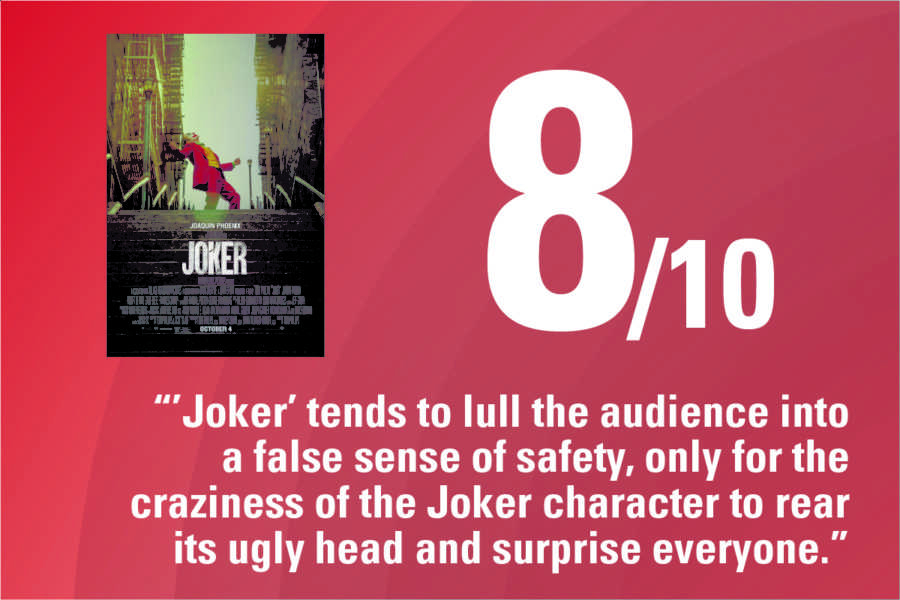Review: “Joker” is an unnerving character study
Reviewer Margaret Troup rates “Joker” an eight out of 10 for many reasons, but most notably for Joaquin Phoenix’s performance as Arthur Fleck.
October 4, 2019
Director Todd Phillips’ movie “Joker” released Thursday. Grossing $13.3 million at the opening night box office, “Joker” broke the record for an October preview, set by Sony’s “Venom” last year.
“Joker” follows Arthur Fleck, a mentally disturbed man and failing comedian, as he comes to terms with his actions and reality.
Joaquin Phoenix’s performance as Arthur Fleck is by far the highlight of “Joker.” “Oscar-worthy” doesn’t begin to describe Phoenix’s ability to portray his exaggerated facial expressions, movements and voices.
Right off the bat, Phoenix makes the audience feel unsettled. His cackling laughter can be seen as a character itself and this precedent is set in just the first few minutes of the film.
Frances Conroy and Robert De Niro deserve more than a nod to their supporting roles as well.
Conroy, who portrays Arthur’s mother Penny, does so much more with the few lines she is given. Being able to draw from the audience such a feeling of sympathy toward her with her sheepish dialogue truly shows what a convincing actress she is.
De Niro takes a back seat in this film. Known for his legendary performances in classics such as “Taxi Driver” and “Goodfellas,” De Niro allows for Phoenix to be center stage while still maintaining his presence as an acclaimed actor.
With all of this said, “Joker” is not without its flaws. There’s about thirty minutes in the middle of the film that are pretty slow. Almost every scene with Zazie Beetz, as talented as she is, does little to progress the plot of the story.
Additionally, “Joker” sadly falls into the overused movie trope of mental illness equals evil. The silver lining of this controversial take on mental illness is that Phoenix pulls it off in the best way possible.
While this movie is violent, its goriness is not over the top. The plot tends to lull the audience into a false sense of safety, only for the craziness of the Joker character to rear its ugly head and surprise everyone.
Quite possibly the most interesting element in “Joker” is Arthur — and the audience’s — inability to discern reality from fantasy. Similarly, to Satoshi Kon’s “Perfect Blue,” the main character has trouble discerning who they are in society and thus their perception of reality begins to tear at the seams.
After one particular twist is revealed about Beetz’s character, the audience is left guessing which events in Arthur’s life have actually happened or not. This element of the story alone kept everyone at the edge of their seats.







